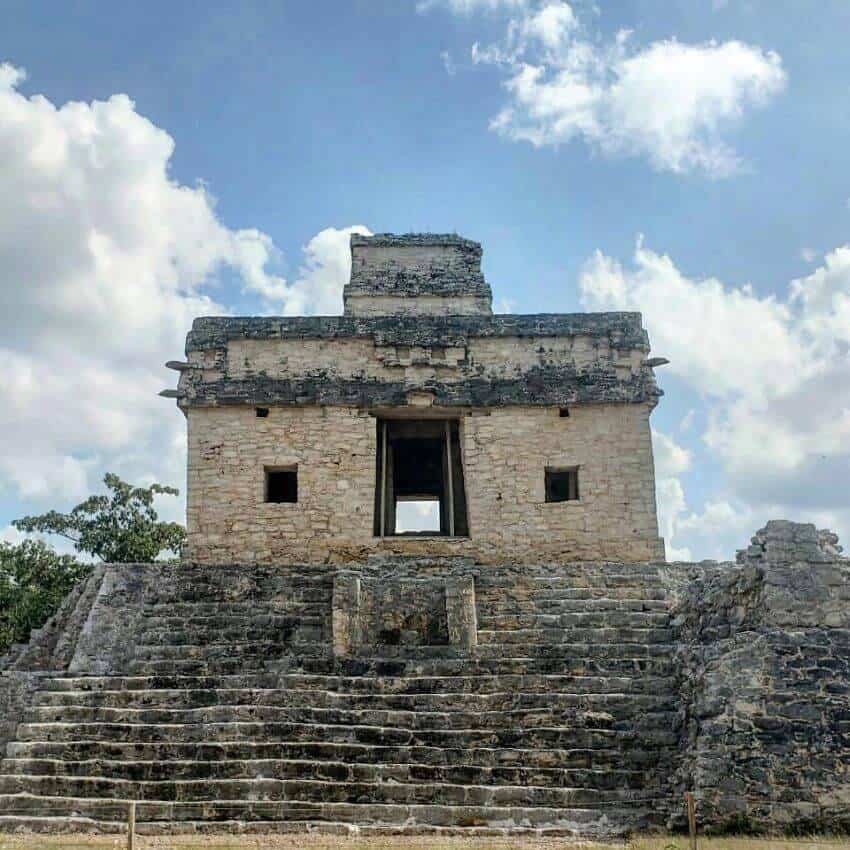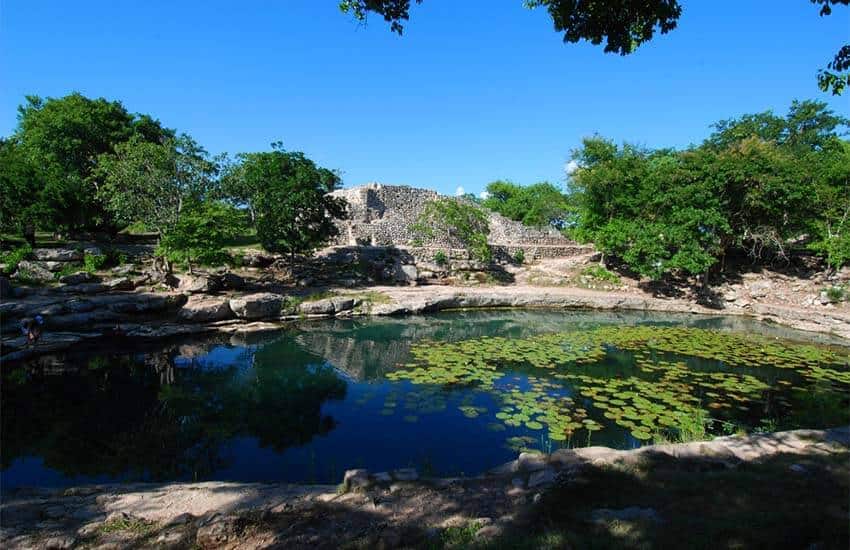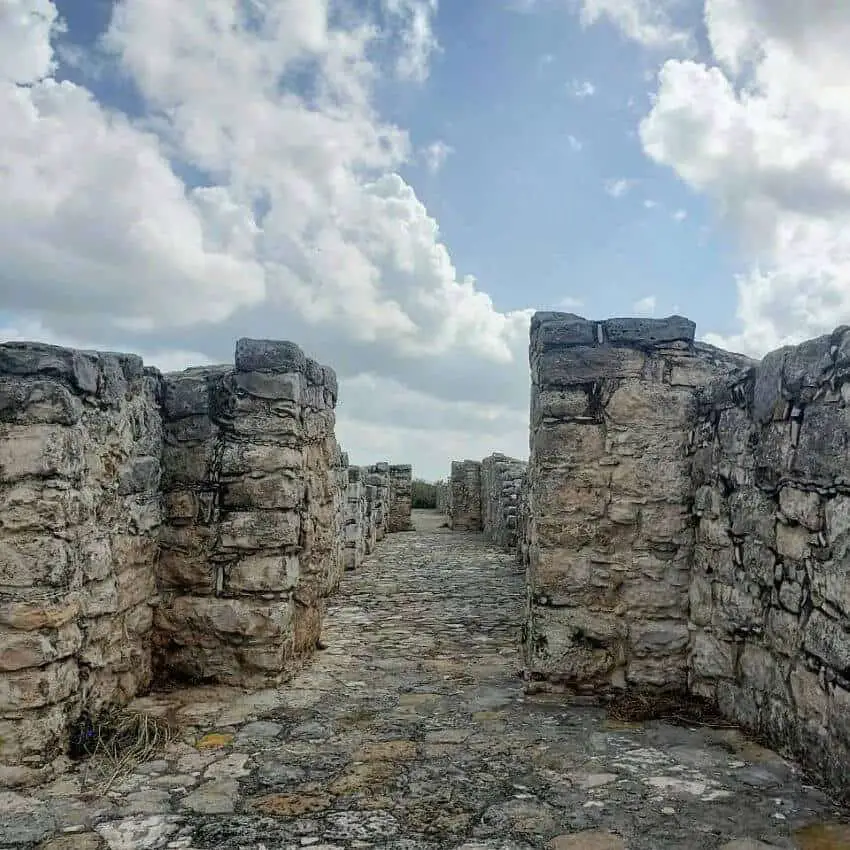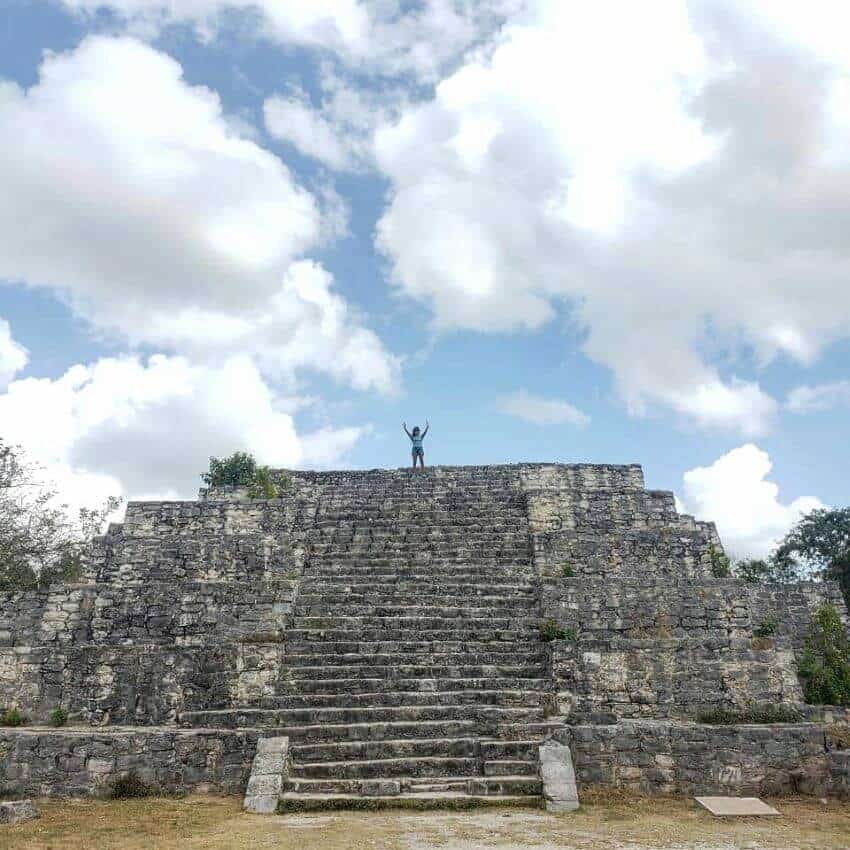Conveniently located around 15 kilometers north of Mérida, the ruins of Dzibilchaltún are thought to be one of the earliest Maya settlements and a popular destination during the spring and autumn equinoxes, when visitors can observe the sunrise’s beautiful effects on one of its temples.
Dzibilchaltún is Mayan for “place where there is writing on the flat stones.” It is thought to be related to the many stelae — stone slabs with inscriptions or reliefs — found on the site.
The first occupation of Dzibilchaltún probably dates as far back as 600–300 B.C., and it was occupied for around 2,000 years until the Spanish arrived in the 16th century. Dzibilchaltún had extended to around 19 square kilometers, and its peak population is speculated to have reached as high as 40,000 people.
According to the National Institute of Anthropology and History (INAH), the city took regional control of the northwestern Yucatán Peninsula toward the conclusion of the Classic period (around A.D. 200–900) from the previously dominant city, Komchén, which is located to the northwest of Dzibilchaltún. Situated close to the coast, the city’s economic activities, in addition to agriculture, had included salt production and manufacturing products using objects derived from the sea.
You can explore the ruins within a few hours at most, but prepare for some walking.

The entrance to the site is from the north. Onsite, near the entrance, is the Museum of the Mayan People, whose mission is to share a general idea of Mayan culture throughout history. Unfortunately, the indoor area of the museum was closed during our recent visit. However, visitors can still enjoy the beautiful outdoor display area of stone sculptures from the Yucatán Peninsula, including zoo-anthropomorphic figures — a mix of animal and human shapes such as animal heads over human bodies.
Twelve white raised roads built by the ancient Maya are identified on the site. East of the site, at the end of a notable white road, is the famous Temple of the Seven Dolls, named after an offering of seven ceramic dolls, identified as human figures, that were discovered there. It is also called the Temple of the Sun.
According to INAH, this temple is almost aligned with the four cardinal points. It is thought to have had an astronomical function. At one time, a larger building existed over this temple, and you can see its remains.
Built on a quadrangular base with stairways and doorways on all four sides, the Temple of the Seven Dolls has two windows each on the east and west facades. There is an interesting structure on the temple’s roof that looks like a small tower. The temple’s frieze has masks believed to be of the Maya rain god Chaac, and it had also been decorated with stucco elements, including animal figures. Unfortunately, accessing this temple is not allowed.
During the solar equinox days in March and September, visitors can observe the effects of the sunrise on the west facade of the Temple of the Seven Dolls. The rising sun is seen through the temple’s eastern and western doors, and the sun centers itself in the doors briefly while producing a spectacular display of sunlight and shadows. On the equinox days, the archaeological site usually opens well ahead of sunrise.
In ancient times, the spring equinox marked the start of planting, while the autumn equinox marked the start of harvesting.

West of the temple along the white road that goes to the central plaza is a stela built on a quadrangular platform with stairs on each side. It is speculated that this stela once had stucco decorations.
En route to the plaza on the white road, remember to look for an interesting section to the south with three stelae, each built on a platform.
Next to the stelae section is the central plaza’s large square. Make time to explore this plaza, whose floor had been previously covered with stucco. Visitors can imagine how magnificent this square once was. Northeast of the plaza is a pyramid structure believed to have had a ceremonial purpose. It has a wide stairway in front; a temple that no longer exists was once on top of the pyramid.
Parts of broken stelae were discovered at the pyramid’s base, including the impressive Stela 19 that is displayed at the site museum. According to INAH, Stela 19 depicts the ruler K’alom ‘Uk’Uw Chan Chak, and its glyphs include the name of the site — Ch’iy Chan Ti’Ho’ — which is considered the site’s original name.
East of the plaza is a building identified as an elite residence. It has a long platform with room structures on top. The important tomb of K’alom ‘Uk’Uw Chan Chak depicted on Stela 19 was discovered here.
But a must-see in the central plaza is the magnificent Structure 44, located to the south. Measuring around 130 meters in length, it has a stairway that appears to run the length of the building. A purpose of Structure 44 is thought to be administrative.

Toward the center of the plaza is the Open Chapel, built by the Spanish in the 16th century. Its features include a semicircular arch and an altar. The building also includes a room-like structure to the north, identified as the house of the friars, who taught the Christian religion to the Mayans of Dzibilchaltún, who were considered pagans.
West of the plaza is a beautiful cenote with clear water, which was a water source for the site. Despite a shallow area, it also has a point reaching around 44 meters in depth. Its name, Xlacah, is Mayan for “old town.”
Many objects were discovered from this cenote, including pieces of vessels and human bones. According to INAH, ancient Mayas believed cenotes were entrances to the underworld, and therefore objects used in self-sacrifice rituals were discovered here.
Swimming in this cenote was permitted during our previous visit, but it has since unfortunately been cordoned off to visitors after the pandemic.
A white road goes west from the central plaza to an interesting temple called the Standing Temple. Unfortunately, this section was overgrown and not accessible. The site also has a ball court toward the south, but the path to that area was cordoned off.
North of the plaza is another square with a few buildings that are worth seeing. The most notable structure here is a beautiful single-room temple.

There are other structures to explore on the site, and many buildings of Dzibilchaltún are yet to be excavated. If you have spare time after exploring this site, visit the Maya site of Xcambó, around an hour’s drive away.
Thilini Wijesinhe, a financial professional turned writer and entrepreneur, moved to Mexico in 2019 from Australia. She writes from Mérida, Yucatán. Her website can be found at https://momentsing.com/
